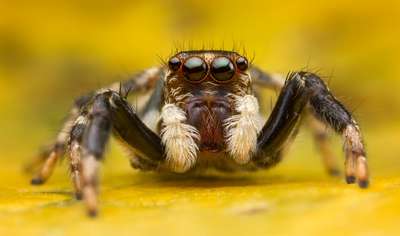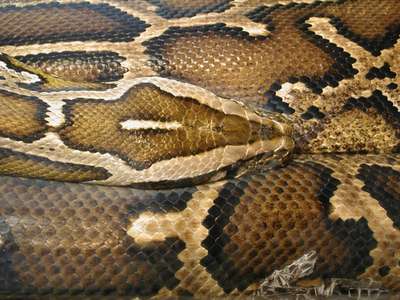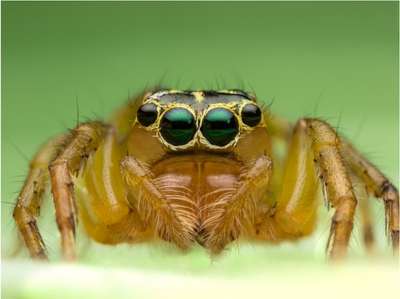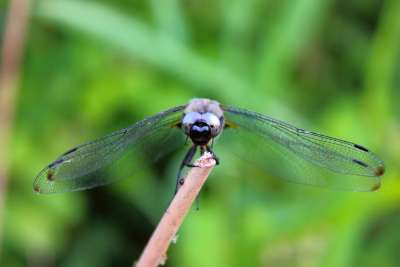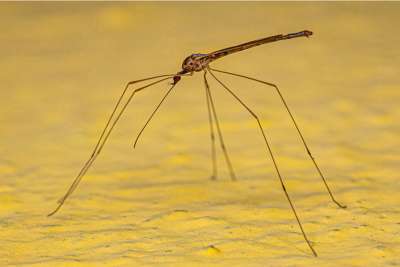Dragonflies are some of the most visible and interesting insects that people encounter in daily life. You may have heard that dragonflies can’t actually walk, even though they have six legs just like all other insects. If you wonder whether this is true, this post will explain.
Larval dragonflies can walk but adult dragonflies cannot. Despite having very good mobility in their legs, a dragonfly completely changes how it uses its legs when it ages from the larval form to the adult form. Adult dragonflies use their legs for many purposes but walking is not one of them.
To us humans, the inability of an adult dragonfly to walk seems very strange. After all, dragonflies have four more legs than we do so walking should be easy for them to do. And if the larval dragonflies can walk, why can’t the adults? Read on for the details about how and why adult dragonflies lose the ability to walk, and what they gain instead.
What does it mean to walk?
Merriam-Webster Dictionary defines the verb “to walk” as “to move or cause to move on foot usually at a natural unhurried gait”. (Merriam-Webster Dictionary, 11th ed., s.v. “walk”, 2004)
Most insects have the ability to walk using a “tripedal” pattern. With a total of six legs to work with, insects first move the left front leg, the right middle leg and the left back leg at the same time, followed by the right front leg, the left middle leg and the right back leg.
This pattern keeps three of the insect’s six legs on the ground at all times which maintains a stable tripod stance throughout the entire movement.
Larval dragonflies use this stepping pattern until they emerge from their larval skin during the last stage of molting as adults, at which point, these insects no longer use their legs for anything resembling “walking”.
Larval dragonflies live different lives than the adults
To understand why young dragonflies can walk but adult ones can’t, it’s helpful to understand the differences between them first.
Dragonflies of all ages are voracious predators but they live very different lives in their larval form than as adults.
Dragonfly larvae (called “naiads”) are aquatic; they live underwater, breathe with gills and attack prey by shooting their modified mouth parts forward at blinding speed to snap up prey.
Adult dragonflies (called “imagoes”) live only on land. Using a combination of tremendous flight speed and agility and superb vision, imagoes intercept flying insects in mid-air and, depending on the species, either gulp them down on the wing or perch somewhere to eat them.
Because of these different lifestyles and hunting strategies, naiads and adults need their legs to do different things.
Are these legs made for walking?
Dragonfly legs are made up of five segments at all ages, with some segments being more mobile than others. The legs are attached to the thorax (the middle section of the insect’s body) by a coxa, or pelvis. The leg itself is made up of the trochanter, femur, tibia and tarsus or foot. Each foot has three parts and two claws.
The joint that connects the leg to the thorax can rotate around all axes so allows each of the insect’s six legs to move back and forth, up and down and to either stretch out or draw up close to the body.
The joints between the trochanter and femur, and the knee and the foot, can’t move in as many different directions but the foot itself can move a lot.
The combination of how all the different joints can move determines how the insect can use its legs. Theoretically, a dragonfly’s legs can support walking as a means of locomotion throughout its life but in reality, an adult dragonfly can’t walk.
The reason is that as dragonflies develop from the larval form to the adult form, their brains and nervous system change the way in which the legs are controlled and thus the way they function.
They trade off the ability to use their legs for locomotion – to move their bodies from one location to another – in favor of using them as formidable hunting weapons.
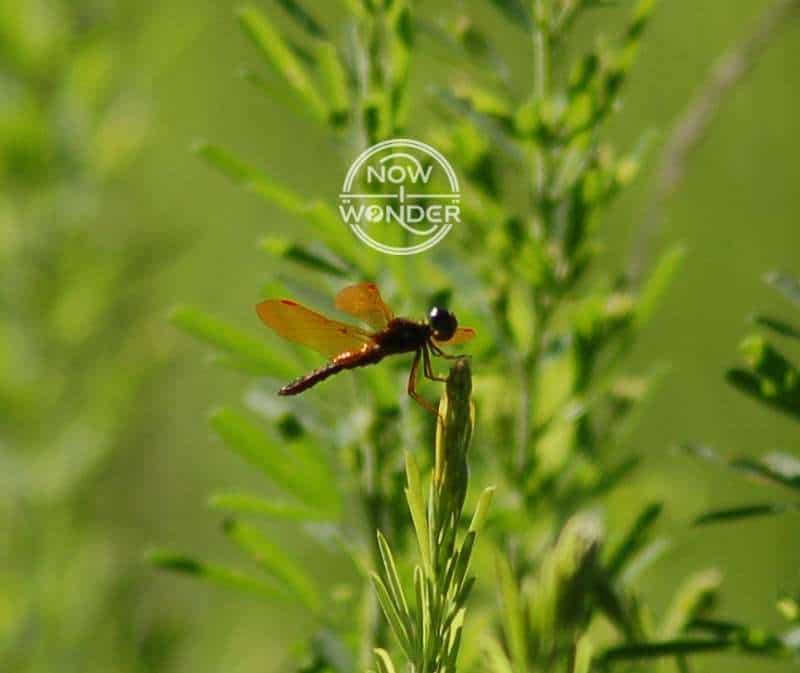
Young dragonflies crawl; adult dragonflies grab
Naiads aren’t very mobile. They are ambush predators, preferring to stay in one place for a long period of time, waiting for their prey to swim within range.
Larval dragonflies use their legs to help them hold onto plants under the water so they remain hidden and avoid getting swept away by any prevailing water current. When they want to change location, they can use their legs to either crawl across the bottom of the pond, lake or river in which they live or swim through the water.
By contrast, an adult dragonfly is extremely mobile but they use their wings to move around, not their legs. Rather than walking, running or jumping to get from one location to another, imagoes fly and their legs become weapons instead.
When an imago spots a prey insect, like a mosquito, deer fly or fellow dragonfly, it flies an intercept course. A split second before the dragonfly impacts the prey, it sweeps all six legs forward to form a basket, which scoops the unfortunate insect out of the air and grips it securely.
This hunting technique requires the dragonfly to coordinate flight speed, body position, visual depth and motion perception and the formation of the leg basket very precisely and at lightning speed.
Young dragonfly legs move automatically; adult legs move manually
In dragonfly larvae, the tripedal stepping pattern is reflexive, with the alternating movement of the combined three legs coordinated as a group.
But in adults, leg movements are controlled by the insect’s higher central nervous system because the functioning of the legs needs to be precisely timed to the wing movement and vision system.
When a dragonfly grows from its larval stage to its adult form, the nervous system’s control of the legs becomes more refined, allowing – and requiring – the insect to move each leg separately.
But what about that YouTube video?
There is an interesting YouTube video that claims to show an adult dragonfly walking. In this video, an adult dragonfly steps along a branch while dipping its tail in the water. Watch it here.
But is this really “walking”? Going back to the Merriam-Webster dictionary definition, the adjective “natural” answers this question as “No”.
While the dragonfly in the video shifts its position slightly by stepping, it is clearly not a natural or easy way for it to move. The insect steps very slowly and almost loses its balance a few times. The dragonfly is merely repositioning itself, not walking.
If you’ve ever seen a dragonfly zoom around an open area, you can compare the awkward and poorly coordinated movement seen in the video to the incredible speed and agility dragonflies display during flight.
A dragonfly naturally moves from one location to another by flying; not walking. While it can use its legs for some degree of movement when grounded, the movement bears no resemblance to walking in the normal sense of the word.
Ancient dragonflies made a trade
Every species on earth makes trade-offs in structure and function throughout their evolution to maximize their survival. No creature can do everything equally well; choices have to be made.
While still able to take a few halting steps when they absolutely have to, adult dragonflies can’t walk. They evolved to prioritize flying over walking and found a way to use their legs for hunting instead of transport. They have ruled the air as hugely successful predators for millions of years; losing the ability to walk turned out to be a small price to pay.
Related Now I Wonder Posts
For more about dragonflies, check out these other Now I Wonder posts:
- Is a dragonfly a fly?
- What do dragonflies do at night?
- What is the difference between a dragonfly and a damselfly?
For information about insects in general, check out these other Now I Wonder posts:
- Do insects ever eat spiders? Part 1: Attacks from the air
- Do insects ever eat spiders? Part 2: Attacks from the ground
- Do insects have blood?
References
Merriam-Webster Dictionary. 2004. 11th ed. Massachusetts: Merriam-Webster, Incorporated.
Olberg, R.M., Visual Control of Prey-Capture Flight in Dragonflies, Curr. Opin. Neurobiol., 2011, vol. 22, pp. 1–5. https://www.sciencedirect.com/science/article/abs/pii/S0959438811002182
Svidersky, V. L., S. I. Plotnikova, V. S. Gorelkin, I. Y. Severina, and I. L. Isavnina. 2014. “Functional Role of Dragonfly Legs before and After Wing Formation: Rearrangement of Coordinatory Relationships.” Neuroscience and Behavioral Physiology 44 (7) (09): 804-809. https://link.springer.com/article/10.1007/s11055-014-9987-1
Svidersky, V. L., V. S. Gorelkin, S. I. Plotnikova, and I. Y. Severina. 2009. “Dragonfly Flight: Function of Legs and Problem of Inhibition of Flight.” Journal of Evolutionary Biochemistry and Physiology 45 (5) (10): 634-636.


